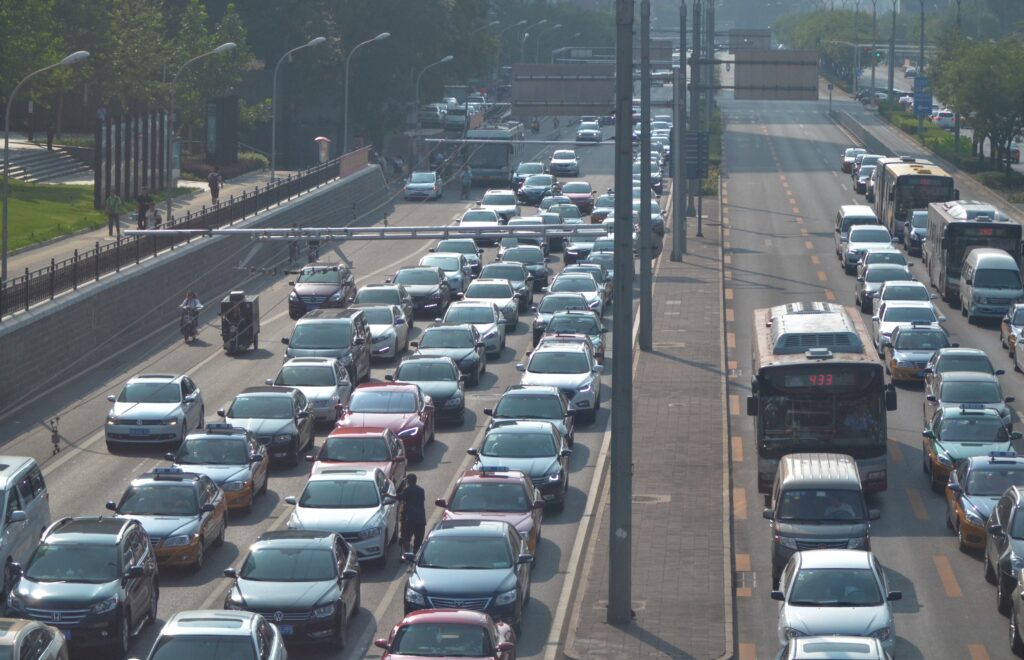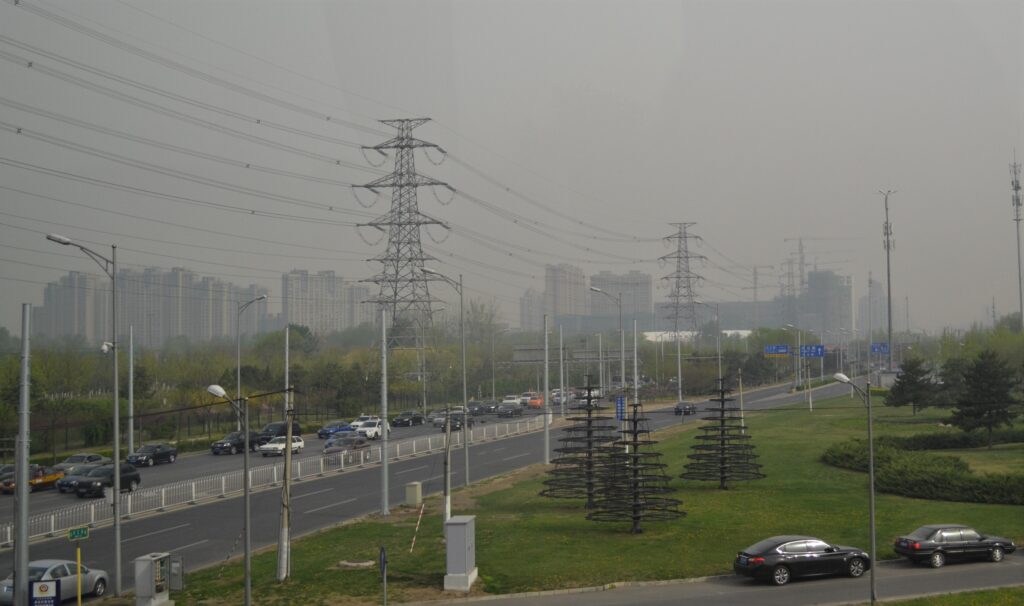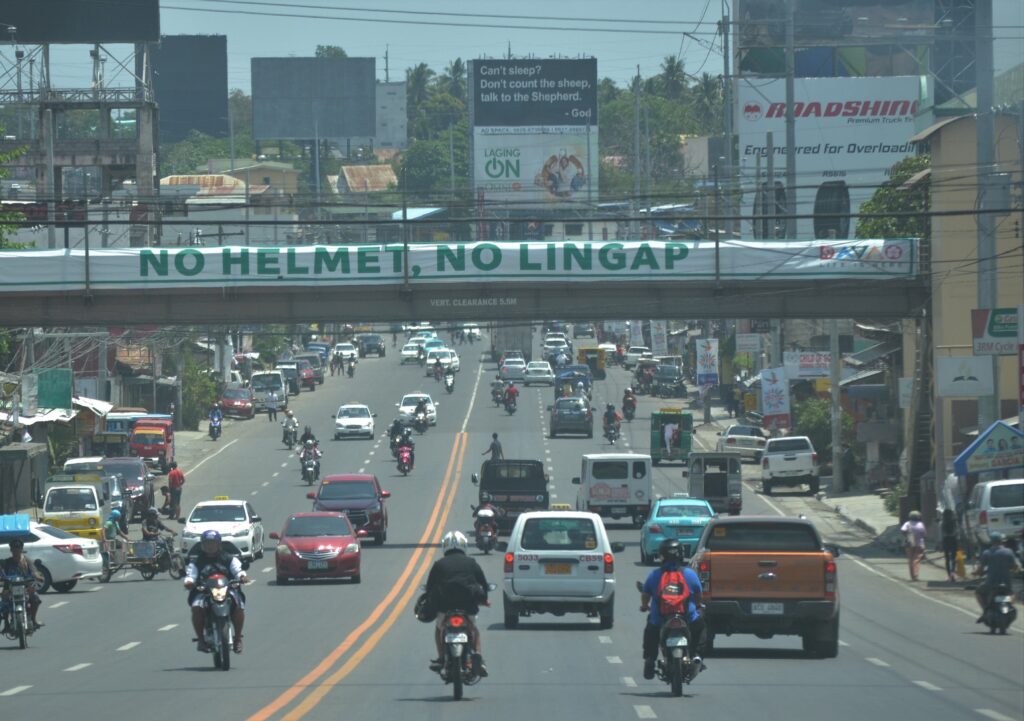Text and Photos by Henrylito D. Tacio
Air pollution may have dropped from news headlines since the pandemic started, but it remains a lethal danger to many. Although health officials are focused more on coronavirus disease 2019 (COVID-19) in the last two years, air pollution precipitates conditions including heart disease, lung disease, lung cancer, and strokes.
Around 90% of people go through their daily lives breathing harmful polluted air, which has been described by the United Nations as the most important health issue of our time.
Air pollution is also harming our natural environment. “Air pollution decreases the oxygen supply in our oceans, makes it harder for plants to grow, and contributes to climate change,” states the Nairobi-based United Nations Environment Program (UNEP).
Yet, despite the damage it causes, there are worrying signs that air pollution is not seen as a priority in most parts of the world, including the Philippines.
In 2000, the World Bank’s annual review reported that in Manila alone, more than 4,000 Filipinos die each year because of air pollution. The mortality figure was the third-highest for a city in the East Asian region after Beijing and Jakarta. Bangkok and Seoul were ranked 4th and 5th, respectively.
Five years later (2005), the problem got worse. Manila’s skies were among the most polluted in the world, surpassed only by Mexico City, Shanghai, and New Delhi, said the regional office of the World Health Organization (WHO).
Davao case
In Davao City, air pollution may not be a big problem yet. But in 2004, figures recorded in the city showed that the air quality was “even worse than in Metro Manila.” At that time, monitoring stations placed in Agdao showed 335 micrograms, while along Quirino and J.P. Laurel streets, the figures were 249 and 185 micrograms, respectively.
In terms of total suspended air particulates, Metro Manila had 132 micrograms per normal cubic meter. The acceptable standard is 90 micrograms, according to the Department of Environment and Natural Resources (DENR).
A study conducted in 2018 – which was published in Philippine E-Journals – confirmed the 2004 findings. “The dust density has gone beyond the limit for what is considered acceptable,” said the study, whose research sites included 20 selected busy streets in Davao City.

The following year (2019), however, the air quality of Davao City improved, as per the Air Quality Index (AQI). “Even if our AQI still falls within the good and fair level, we could not say that this has no health hazards,” Melvin Dapitanon, Engineer II of the regional office of the Environmental Management Bureau (EMB), was quoted as saying.
“As a precaution people with respiratory issues must wear masks because whenever there is an increase in pollution, there is more risk for them,” Dapitanon told Davao Today.
More than just oxygen
Although most people usually speak of the material they breathe simply as “air,” experts say it is actually a mixture of substances. Clean, dry air is mostly (99%) nitrogen gas and oxygen gas. A person carries approximately two quarts of oxygen in the blood, lungs, and body tissues at any given time. Brain cells deprived of oxygen for more than four minutes begin to die.
“The life-giving oxygen molecules in fresh air should be unpolluted,” wrote Dr. Richard G. Mendoza in a column he wrote for Health and Lifestyle. “Oxygen provides efficient cell function by permitting the metabolism of nutrients and the transfer of energy within cells.”
Like water and natural resources, air can also be polluted. In the Philippines, sources of air pollution include emissions from three sources: mobile-like vehicles, stationary such as power plants and factories, and area which comes from garbage burning, road dust, and open cooking.
Food production also contributes to air pollution. Agricultural processes and livestock produce methane, an extremely powerful greenhouse gas. Methane is also a by-product of waste burning, which emits other polluting toxins, which end up entering the food chain.
Common forms of air pollutants
The most common forms of air pollutants are suspended particulate matter (SPM), carbon monoxide, hydrocarbons (which include benzene, xylene, and ethylene dibromide), sulfur oxides, nitrogen oxides, ozone, and residues of the highly toxic tetraethyl lead; a substance added to gasoline to enhance its octane value or “burning quality.”
SPM refers to any tiny solid particle dispersed from pesticides, asbestos, and thousands of other products. The most noticeable type of air pollution (since it is readily visible) often attracts and carries chemicals through the air, such as dust-carrying sulfuric acid. “Smog” – a hybrid word used to describe the mixture of smoke and fog that blankets some cities – is primarily composed of ozone and particulates.
Health hazards
Like smoking, air pollution is lethal to human health. A study done by the Geneva-based World Health Organization (WHO) says air pollution kills three times more than vehicular accidents.
Air pollution affects health in both the short and long term. Short-term effects include irritation to the eyes, nose, and throat and infection of the upper respiratory tract, such as bronchitis and pneumonia. Other effects are headache, nausea, and allergic reaction. Air pollution can also worsen asthma and emphysema conditions.
An epidemiological study conducted by the University of the Philippines College of Public Health showed that the prevalence of chronic obstructive pulmonary disease (COPD) is 32.5 percent among jeepney drivers, 16.4 percent among air-conditioned bus drivers, and 13.8 percent among commuters.
In March 1999, the British Medical Journal quoted Dr. Miguel Celdran, a pediatrician at the Makati Medical Center, saying: “About 90 percent of my patients have respiratory illness, and we’re seeing babies as young as two months suffering from asthma. Twenty years ago, this was unheard of.”
The Philippine Pediatric Society surveyed doctors and asked them to describe the most common illnesses that they treat. The doctor’s response was unanimous: diseases of the upper respiratory tract. One study found out the urine samples from children living and begging on the polluted streets showed that at least 7% had high lead concentrations.
Many air pollutants – a mix of gases, droplets, and particles – are able to pass through the lungs into the bloodstream and are eventually transported to the heart and the entire body through blood vessels.
“Because the cardiovascular system is dependent on the functioning of the respiratory system, it is also indirectly affected by the deleterious effects of the pollution on the lungs,” the UN health agency explained. “These impacts combined, damage and inflame blood vessels and affect heart function.”
This has been supported by a study published in Lancet. Dutch physician Dr. Gerard Hoek found that those living near a major road have a higher risk of dying than the rest of the population. He concluded that long-term exposure to traffic-released air pollution may shorten life expectancy.

Polluted air 
Vehicular volume
Other studies also revealed that heart attacks, life-threatening heart rhythms, and thickening of the blood could also be traced to exposure to air pollution.
“To make it clear: all these bodily changes spell doom for the Filipinos living in Metro Manila (and other highly-urbanized centers),” warned Dr. Willie T. Ong, a cardiologist and internist. He added that they treat about 400 indigent patients annually in the health center where he sometimes works.
Over four percent of all deaths in the Philippines are attributed to air pollution, according to a World Bank report. The government spends about P962 million per year to treat diseases caused by air pollution.
Main culprit
Transport continues to be responsible for the premature deaths of hundreds of thousands of people around the world. Estimates show that an automobile consumes as much oxygen per month as 1.1235 human beings.
“Although the automobile has done much to improve the life of man, its growing popularity has brought concomitant problems which, ironically, may negate the very benefits that are hoped for,” someone commented. “The age of the motorcar has also become the age of pollution and energy depletion.”
Stop pollution
Environmentalists urged everyone to help stop air pollution. In the Philippines, not all people have vehicles, but people can contribute something. They can do it individually.
“At an individual level, a lot can be achieved if we change our behavior,” said a UNEP official. “Some people may be surprised to hear that households are responsible for around 4.3 million deaths each year. This is because many households burn open fires and use inefficient stoves inside homes, belching out toxic particulate matter, carbon monoxide, lead and mercury.”
Simple actions can also include using public transportation, cycling, or walking, reducing household waste and composting, eating less meat by switching to a plant-based diet, and conserving energy.
Every little bit counts in the fight against air pollution. A European study has found that even very small cuts in pollution can benefit health. One research from Harvard University showed that people living in cities where air pollution decreased in recent years saw their life expectancy increase an average of five months as a result of cleaner air.
Fresh air is invigorating. In his column, Dr. Mendoza wrote: “Good quality clean air may usually be found in abundance in natural outdoor environments, especially around evergreen trees, green plants in mountains and forests, near moving waters such as lakes, oceans, rivers, waterfalls, and after rain.”

